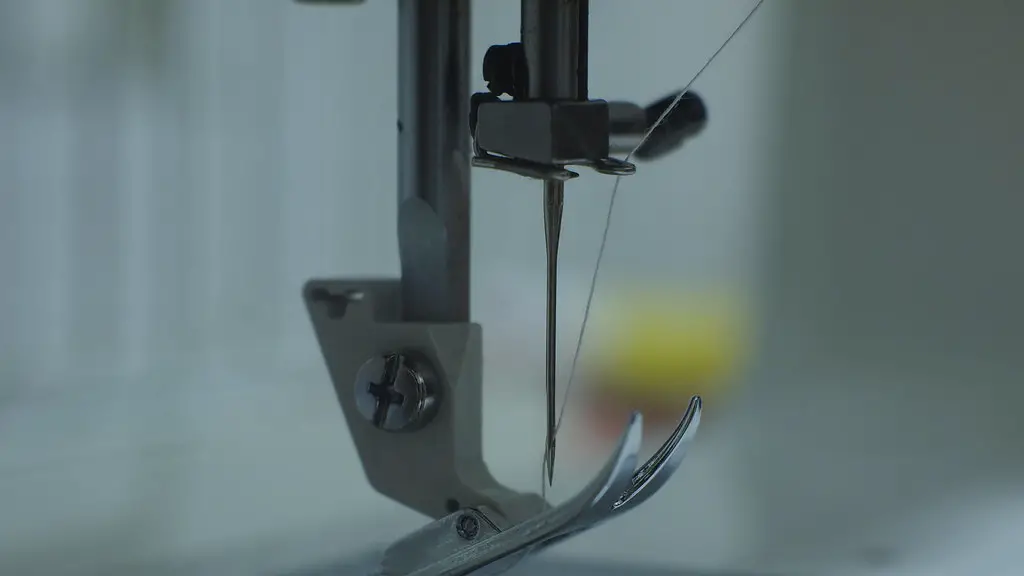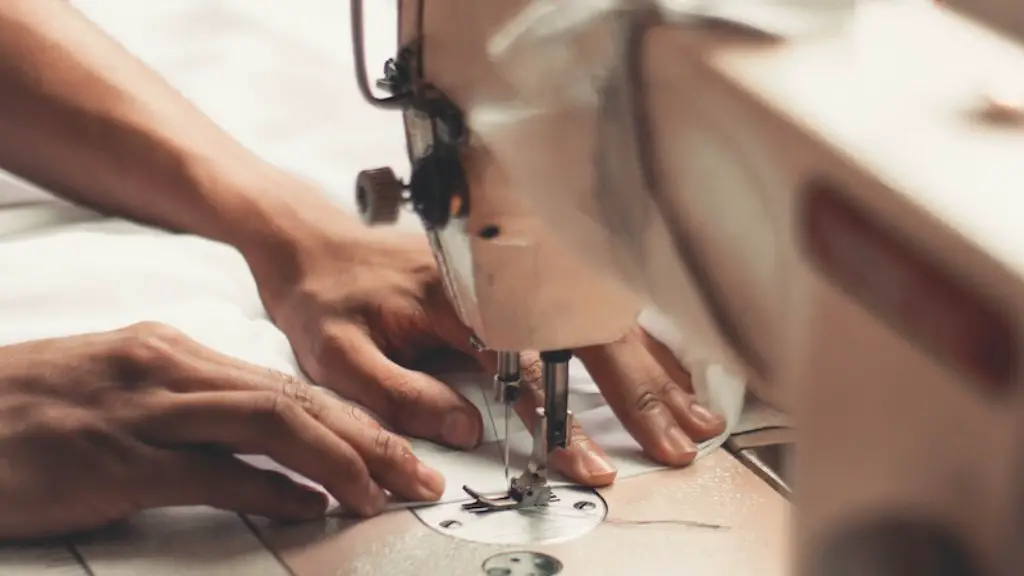Choosing the right sewing machine needle is important to create successful sewing projects. The needle must be the right size and type for the fabric and thread being used. It is also important to match the needle to the sewing machine. This guide will teach you how to select sewing machine needles.
In order to select the proper sewing machine needle, you will need to consider the type of fabric you are working with. Needles are available in different sizes and shapes, so it is important to choose one that will work well with your particular fabric. needle size is usually determined by the thickness of the fabric thread.
What is an 80 12 needle used for?
Ball point needles are the best choice for sewing on knit fabrics, as they will not damage or break the fibers. All-purpose thread can be used, but polyester thread is a better choice as it is stronger and less likely to break.
There are a few factors to consider when choosing the right needle size for your project: the type and weight of thread, the fabric being sewn, and the desired stitch size.
For example, a heavier thread like upholstery weight will require a larger needle, while a delicate thread like embroidery floss can be sewn with a smaller needle. The same goes for the fabric: a thicker fabric like denim will need a larger needle than a delicate fabric like silk.
And finally, the desired stitch size will also affect the needle size. A small, tight stitch will require a smaller needle, while a larger, looser stitch can be sewn with a bigger needle.
So when choosing a needle size, consider all of these factors to find the best size for your project.
What are the 7 different types of sewing needles
There are a variety of hand sewing needles available, each designed for a specific purpose. Sharps are general all-purpose needles, while embroidery and crewel needles have long, narrow eyes and a very sharp point. Beading needles are thin and have a large eye to accommodate multiple strands of thread, while chenille needles are thick and blunt, perfect for working with heavy fabrics. Darning needles are long and have a blunt tip, making them ideal for mending holes in fabric. Quilting needles are shorter and have a sharp point, perfect for piecing together quilts. Felting needles have a barbed point that helps to interlock fibers when working with felt. Canvas needles have a large eye and a blunt tip, making them ideal for working with canvas and other heavy fabrics.
Quilting machines are designed to stitch through thick layers of fabric and intersecting seams. Quilting needles feature a sharp, tapered point and are available in different sizes to accommodate different thicknesses of fabric. Use quilting needles to piece quilts and machine quilt the layers together.
What is a 70 10 sewing machine needle used for?
70/10 needles are made to sew fine, lightweight fabrics like chiffon, satin, and organza. Think fabrics for formal wear. 80/12 needles are appropriate to sew lightweight fabrics like lawn, faille, and georgette. Think lightweight flowy fabrics for dresses and blouses.
If you’re looking for a versatile needle that can handle a variety of fabrics, the Schmetz Universal Needle in Size 75/11 is a great option. This standard-size needle is perfect for sewing and quilt piecing, especially on finer woven fabrics. And it fits the Singer Featherweight 221 and 222K perfectly. The slightly rounded point allows for trouble-free sewing on numerous types of materials, including both knits and woven fabrics. So if you’re looking for a needle that can do it all, the Schmetz Universal Needle is a great choice.
What are the two things to consider in choosing a needle?
There are two main types of needles used for sewing – sharp and ball point. Sharp point needles are generally better at cutting through materials and are usually used on tightly woven or non-woven fabrics. Ball point needles are most often used on knit fabrics. They tend to move the threads of the material to the side of the needle as they sew.
When it comes to knitting needles, medium sizes are generally the best for beginners. This means you should look for a width size of six (4mm), seven (45mm), or eight (5mm). For length, a 10-inch needle is usually a good starter size because they’ll be small enough to handle easily.
Does it matter what needle you use for sewing machine
When choosing a sewing machine needle, there are a few things you need to take into account:
– The type of fabric you’re working with
– The thickness of the fabric
– The type of stitch you’re using
For instance, if you’re working with a lightweight fabric, you’ll want to use a smaller needle size so as not to damage the fabric. Conversely, if you’re working with a thicker fabric, you’ll want to use a larger needle size to ensure that the stitches are properly formed.
Keep in mind that using the wrong type of needle can also cause skipped stitches, which can ruin your project. So be sure to do your research and choose the right needle for your project!
There are different types of universal needles available, with different sizes and lengths. The most common types are:
Size 60/8 – this is the most common size used for medium to heavyweight fabrics
Size 80/12 – this is used for lighter fabrics
Size 90/14 – this is used for very light fabrics
When purchasing universal needles, always check the package to ensure that you are getting the correct size for your fabric.
What is the most common sewing machine needle size?
This recommendation is based on the fact that these needle sizes can be used for a variety of fabrics, including light to medium-weight fabrics.
Sewing machine needles come in different sizes to accommodate different types of fabrics. The numbers on the needle packages represent the thickness of the fabric you are able to sew with the needles. The larger the numbers, the thicker the fabric you can sew. Conversely, smaller numbers are for sewing finer fabrics. Choose the needle size that is appropriate for the fabric you are working with to get the best results.
When would you use a 100 16 needle
These needle sizes are perfect for heavy fabrics that are tough to sew through. The thick threads will be no problem for these needles, and you’ll be able to get through the dense fabric with ease.
Machine size 9/70 is suitable for light fabrics, silk and taffeta. Machine size 11/80 is suitable for medium fabrics, cotton, linen and satin. Machine size 14/90 is suitable for medium to heavy fabrics, this is an ideal in between needle. Machine size 16/100 is suitable for heavy fabrics, denim, tweeds, curtain fabrics and soft furnishings.
What is the most commonly used needle number?
Needles come in a variety of sizes, the most widely used being 50, 60, 70, 80, 90 and 100, which are half a millimeter to a millimeter in thickness. Needles this size are usually used for general sewing and mending.
Metallic 80/12, 90/14 *Twin- 25mm/80, 30mm/90
This needle is specifically designed for use with metallic threads. It has a long elongated eye, a fine shaft, and a sharp point. Additionally, it has a deep scarf in front of the needle which helps to eliminate skipped stitches and fraying of the thread.
Conclusion
There are a few things to keep in mind when selecting needles for your sewing machine. The type of fabric you are sewing with will play a big role in what kind of needle you will need. If you are sewing with a lightweight fabric, you will need a smaller needle. A larger needle is better for heavier fabrics. You will also need to take into account what kind of stitch you are using. A straight stitch will require a different needle than a zigzag stitch. Lastly, make sure the needles you select are the right size for your sewing machine.
The most important thing to consider when selecting sewing machine needles is the type of machine you have and the type of fabric you will be sewing. needle size and type are also important considerations.





